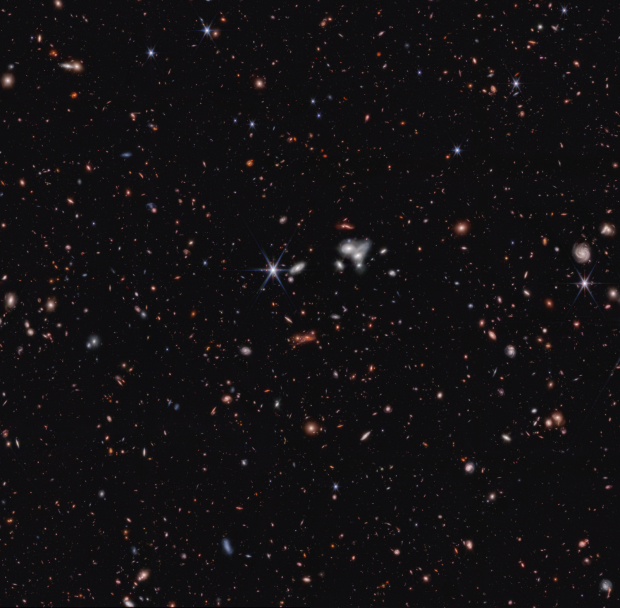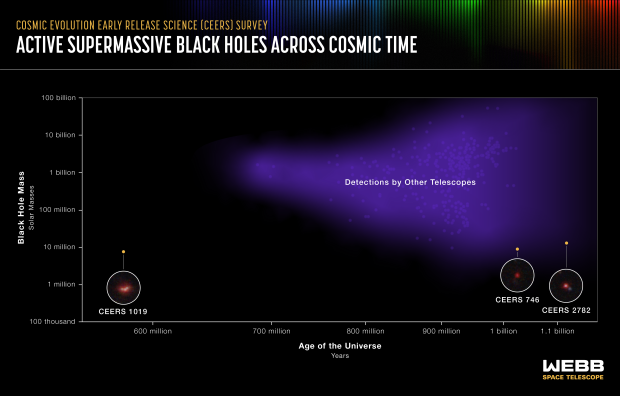NASA has announced that its James Webb Space Telescope, the world's most powerful space telescope, has identified a supermassive black hole that existed just over 570 million years after the Big Bang, making it the most supermassive distant black hole discovered so far.

The previous record holder for the most distant supermassive black hole was a black hole detected in 2021 that measured 670 million years after the Big Bang. NASA explains on its blog post found on its website that this new record breaker identified as CEERS 1019 has also broken the record for the smallest supermassive black hole ever discovered in the early universe.
NASA writes that CEERS 1019 is relatively small compared to other supermassive black holes, clocking with 9 million solar masses, or 9 million times the mass of the Sun, which is tiny compared to other supermassive black holes discovered in the same era that typically have 1 billion solar masses.

"Though smaller, this black hole existed so much earlier that it is still difficult to explain how it formed so soon after the universe began," NASA writes. "Researchers have long known that smaller black holes must have existed earlier in the universe, but it wasn't until Webb began observing that they were able to make definitive detections."
"CEERS 1019 is more similar to the black hole at the center of our Milky Way galaxy, which is 4.6 million times the mass of the Sun. This black hole is also not as bright as the more massive behemoths previously detected.
Though smaller, this black hole existed so much earlier that it is still difficult to explain how it formed so soon after the universe began.Researchers have long known that smaller black holes must have existed earlier in the universe, but it wasn't until Webb began observing that they were able to make definitive detections," writes NASA



